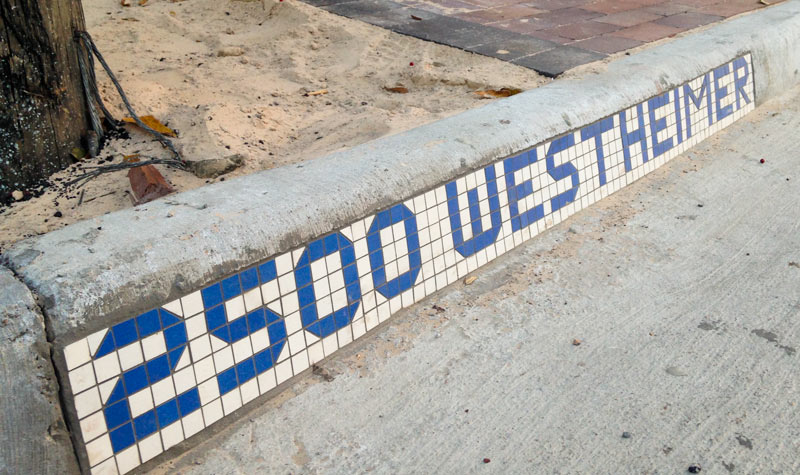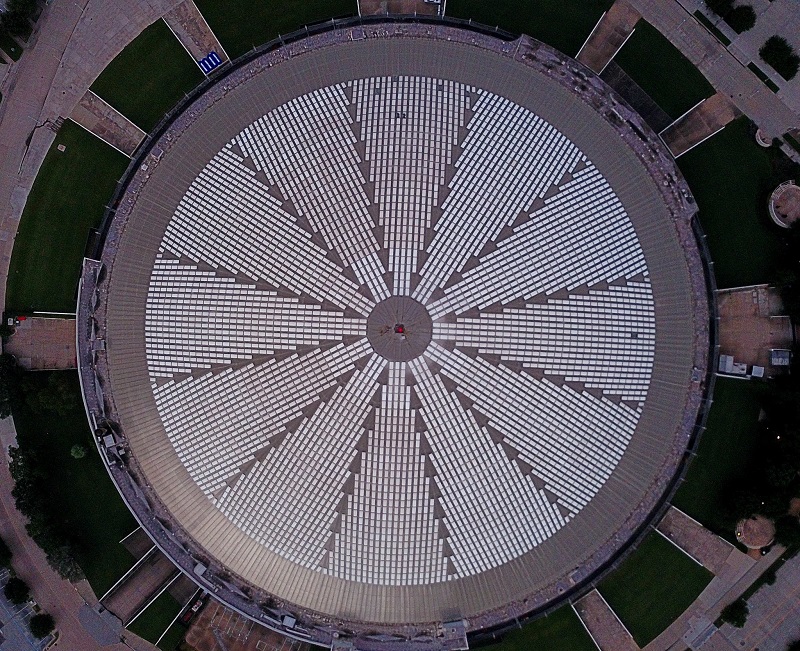
Houstorian James Glassman sends this photo of a shiny new blue tile street sign along a Westheimer Rd. curb just east of Kirby Dr., where months of road and sidewalk construction is wrapping up. The fresh mosaic is in the style of those installed around Houston in the 1920s and into the 1950s before the rise of auto traffic made foot-level street markers less practical than eye-level signage.Â
The new sign doesn’t yet appear on the online map maintained by Joey Sanchez of the Blue Tile Project, which documents the locations of the original tile markers, though Sanchez noted the sign this morning on the project’s Twitter feed:
***
Fresh out the kitchen #BlueTileProject pic.twitter.com/mA0t6zHVdK
— Joey Sanchez (@BlueTileProject) March 2, 2016
- Bring the Blue Tile Back to the Bayou City [Blue Tile Project]
- Previously on Swamplot: Where Houston’s Curb-Level Blue Tile Street Signs Can Still Be Found
Photo: James Glassman





Very cool.
I love the old blue street signage on the curb. I hope this is done all along the part of Westheimer that’s being reconstructed. A big “thank you” to whoever is responsible for this.
One 18-wheeler makes a tight turn, and CRUNCH. Was fun while it lasted.
We need more of these to replace so many that have been lost.
It wasn’t so much the “rise of auto traffic [making] foot-level street markers less practical than eye-level signage” that caused the disappearance of the originals. Rather, it was the ADA requirement for curb cuts whenever a sidewalk is worked on. The original markers were at the exact location where the curb cuts needed to go.
Yeah, not sure about this effort.
While I love both preserving history and funky oddities, this might be wasted effort because we all know anything can happen anytime here in Houston. Resulting in digging-up, paving-over, re-naming or putting a billboard column on top of these lovely tiles.
Hopefully it’s not just a trend but a desire to revert to a time when life was much simpler. Maybe one day you’ll be able to walk into a gas station and ask for directions and if not call the operator from the closest pay phone to ask where the nearest diner is because it’s late and you’re tired and hungry from your long drive into Houston. Maybe at the diner the friendly waitress will give the kids an extra cherry on their sundaes while chatting up where a few of the best nearby motels are located. Afterwards, as you drive your ten thousand pound Honda Civic with white wall tires to the closest motel, you’ll get there by way of curb tiled street signs.
Can anyone direct me to written documentation regarding the history of these tiled addresses? I’ve read several speculations online; such as, it was a beautification project in the 20’s, the pre-auto method of naming streets (as mentioned in this article), but I have not yet found actual published articles about their history. I hope you can help!